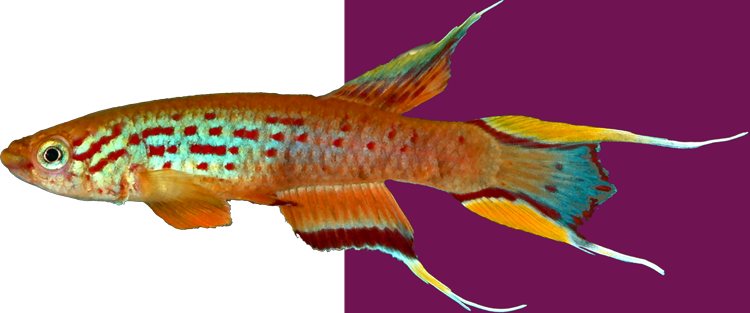There are a number of striking man made variations, and there are several different wild populations in captivity. Most of these look more or less the same although at least one location looks like a gold australe when young. Besides being found in a few places there are other forms that look a little different. In the 1980s there was a collection from "Mayumba" which could not be maintained in captivity. An undated photograph from 2017 (or possibly before) by Carleton Ward, shows a specimen of AUS from Gamba, halfway between Port Gentil and Mayumba. The AUS in Mayumba have white caudal and pectoral fins while the fish from Gamba has a white caudal but orange pectorals; the Port Gentil/Cape Lopez (and all aquarium strains) have orange pectorals and a caudal tipped in white.
Whether this one fish is a unique morph and just one specimen is different because of the substitution of white for orange in the caudal fin or perhaps there's an entire population there of australe with white tails and the only way to find out is to look at more than one which means somebody has to go there and check.
Manmade strains are: gold (also called "orange"), red-gold(Orange but morered in the fins), "spotless orange" (which is exactly as it sounds). A striped fish once showed up in thehundreds ifnot thousands Charlue Drw has bred, but afyer several generations wasneverable tofixthe strrain so trheyprodiucesd allstipedprogeny.Instgead the offspring wee all spotted normally.
 Aphyosemion australe
Aphyosemion australe